British and Colonial Antecedents of American Liberties:
An exhibition of rare books on early American law from the collection of Sid Lapidus at the Wolf Law Library, William & Mary Law School, October 1, 2019 – March 15, 2020
GENERAL TREATISES AND WORKS FOR STUDENTS
|
The Elements of the Common Lawes of England (1630) The first part of this combined work presents Sir Francis Bacon's (1561–1626) distillation of various maxims of common law into principles highlighted by cases and statutes. Originally conceived as a much larger work, this fragment proved highly influential on writers such as Sir John Doddridge (1555–1628), William Noy (1577–1634) and Sir Henry Finch (1558?–1625). The second part, most likely from a different author's hand, describes the purpose of law and its various officers. |
|
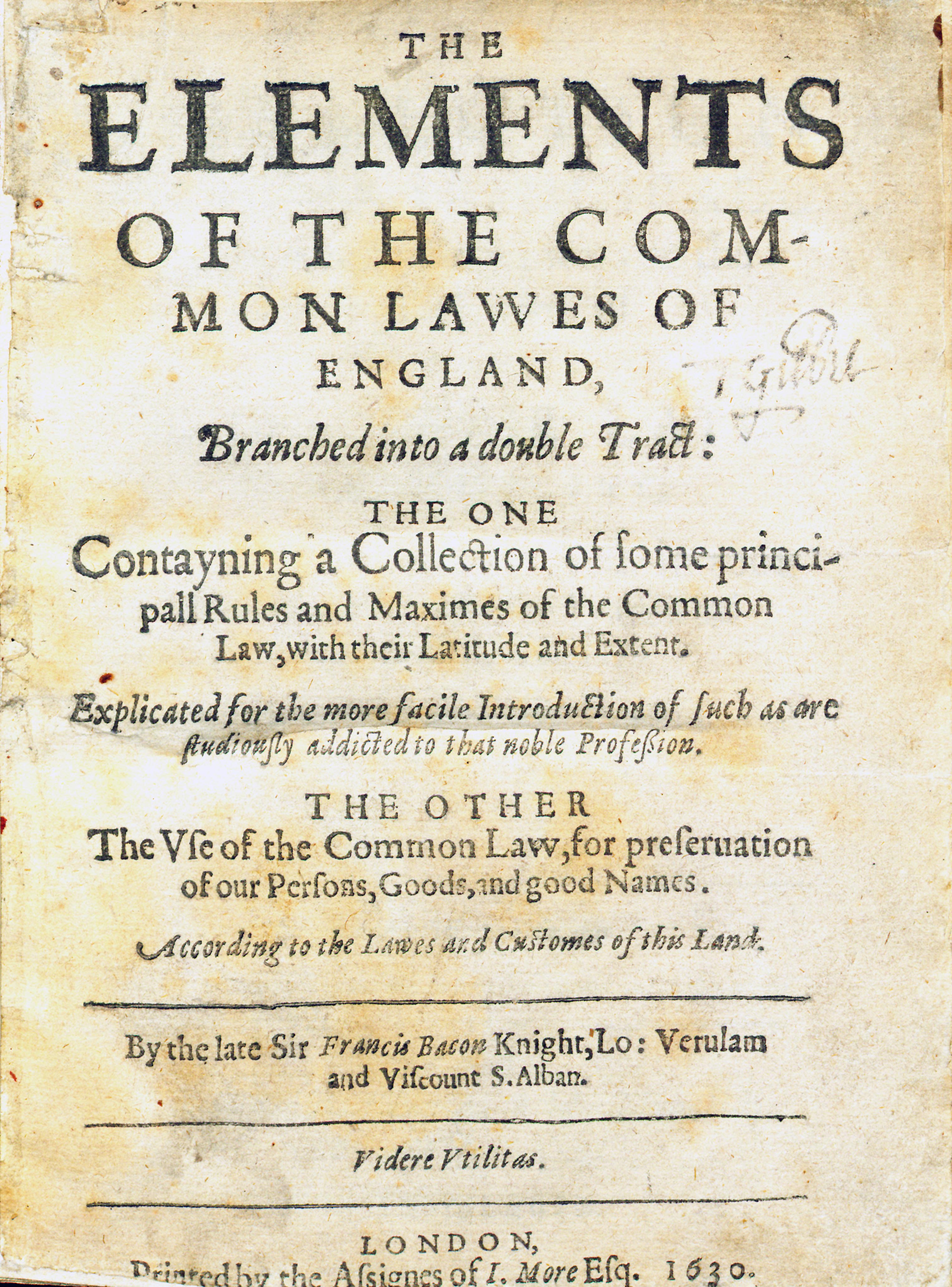
|
Bacon, Sir Francis. The Elements of the Common Lawes of England, Branched into a Double Tract: The One Contayning a Collection of Some Principall Rules and Maximes of the Common Law, With Their Latitude and Extent. Explicated for the More Facile Introduction of Such as are Studiously Addicted to that Noble Profession. The Other the Use of the Common Law, For Preservation of Our Persons, Goods, and Good Names. According to the Lawes and Customes of this Land. 1st ed. London: Printed by the Assignes of I. More Esq., 1630. |
|
Speculum Juris Anglicani (1673) This concisely written work represents one of a growing number of titles created to aid students as the educational system of the Inns of Court declined in the seventeenth century. Using statutes, unwritten law and customs as his headings, John Brydall (1635–1705?) provides a brief overview of the principal characteristics of English law. A useful student manual, two imprints of this edition were the only ones ever published. |
|
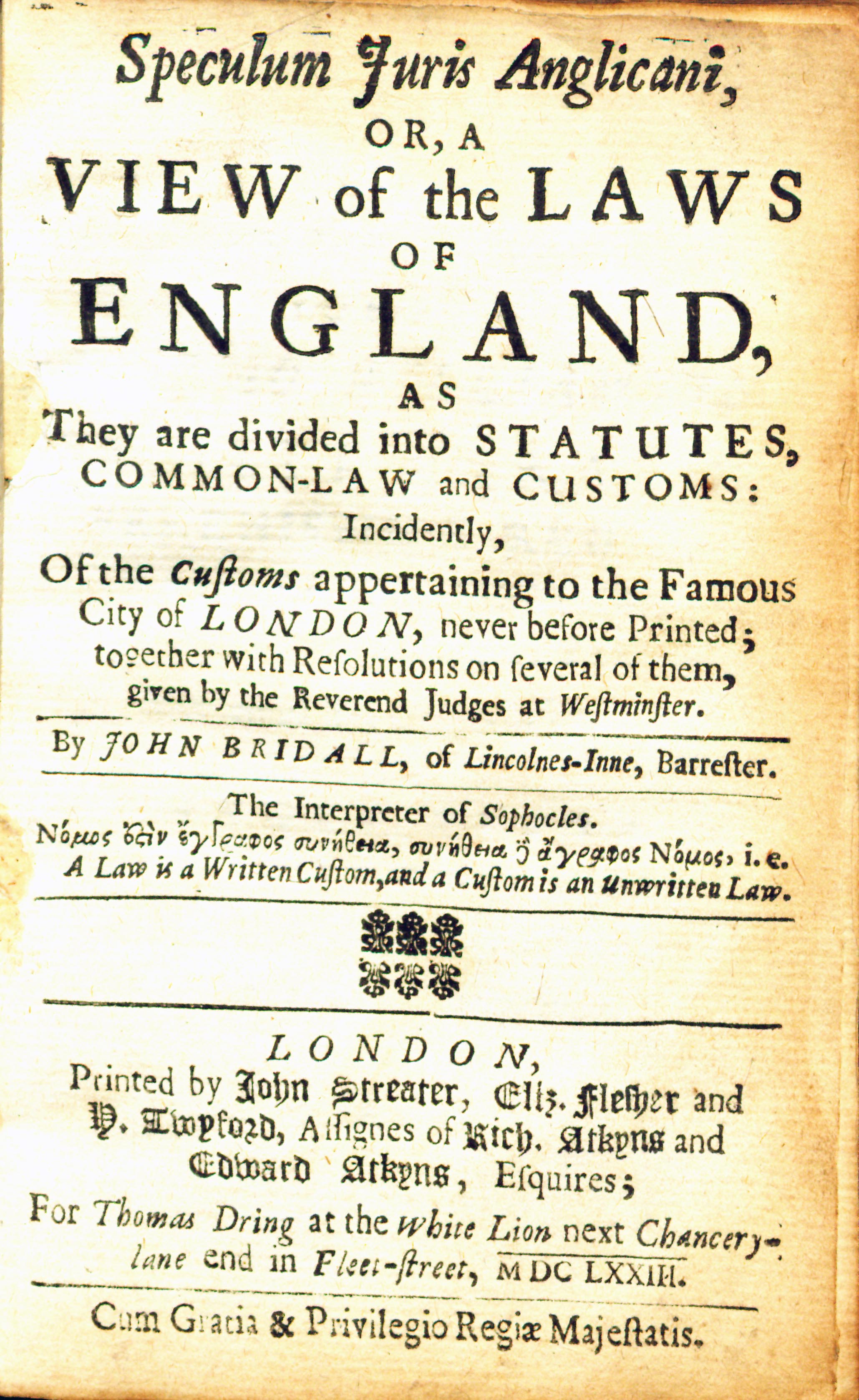
|
Brydall, John. Speculum Juris Anglicani, or, A View of the Laws of England, as They are Divided into Statutes, Common-Law and Customs. London: Printed by John Streater, Elizabeth Flesher and H. Twyford, Assigns of Rich. and Edward Atkins for Thomas Dring, 1673. |
|
The Second Part of the Institutes of the Laws of England (1681) In his Second Institute, Sir Edward Coke (1552–1634) discusses public law and provides insight for thirty-nine statutes which amended or defined the common law. He begins with Magna Carta and continues through to contemporary legislation from the time of James I. Coke's observations on these statutes, particularly his praise of Magna Carta and its declaration of the rights of Englishmen, greatly contributed to colonial thoughts on liberty and the rights of man. This copy is from the Wolf Law Library's George Wythe Collection. |
|
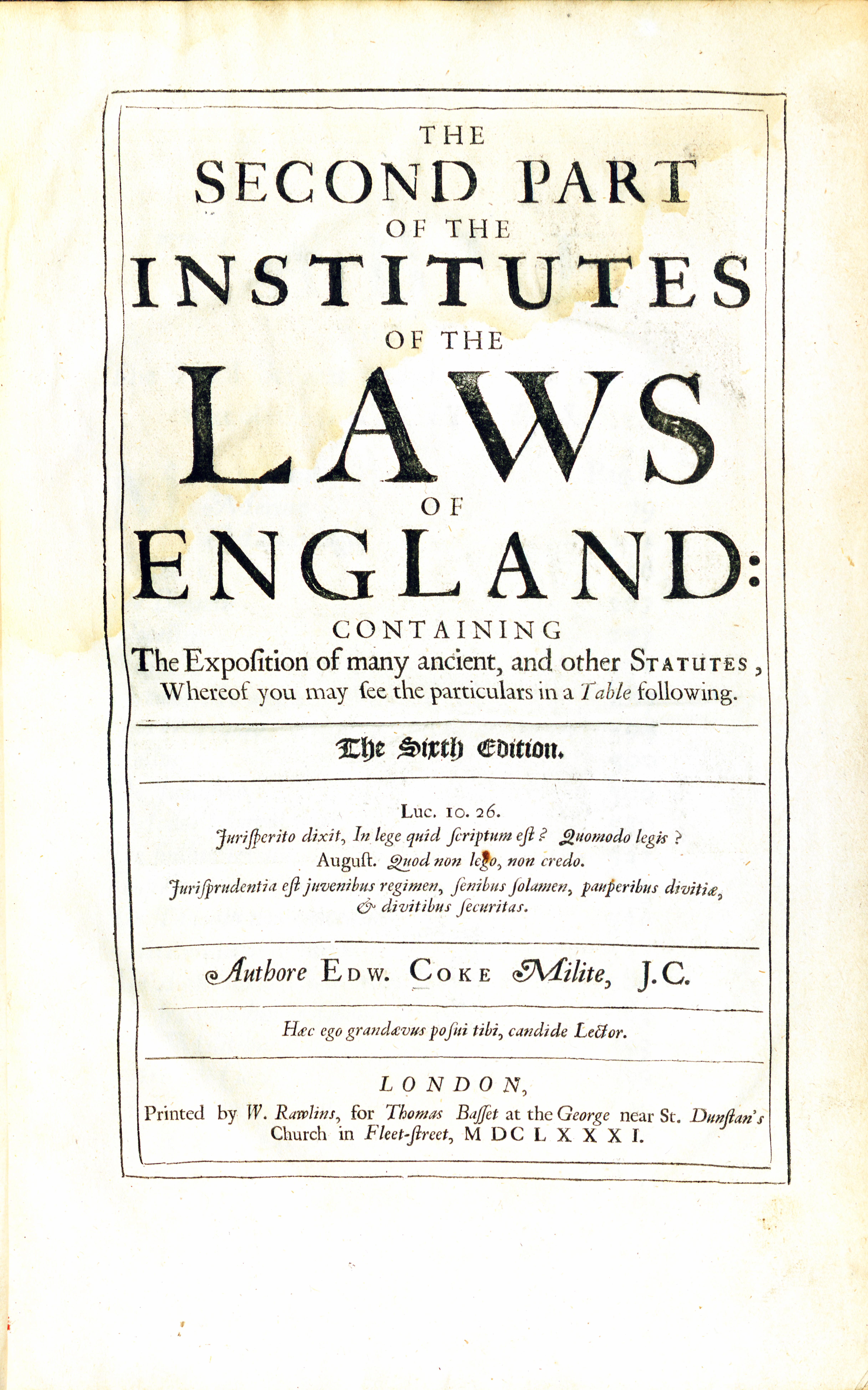
|
Coke, Sir Edward. The Second Part of the Institutes of the Laws of England, Containing the Exposition of Many Ancient, and Other Statutes, Whereof You May See the Particulars in a Table Following. 6th ed. London: Printed by W. Rawlins, for Thomas Basset, 1681. Wolf Law Library. |
|
Origo Legum (1694) In Origo Legum, George Dawson (1636?–1700) presents a respectable introduction to academic legal study. He begins with a general overview of the roots and types of law, and expands his scope to encompass such broad topics as the law of nations, the law of war, and ecclesiastical law. As a work of legal theory, Dawson's book stands as an exception in an otherwise mediocre group of late seventeenth century treatises. He dedicated the work to King William & Queen Mary. |
|

|
Dawson, George. Origo Legum: Or a Treatise of the Origin of Laws, and their Obliging Powers as Also of Their Great Variety and Why Some Laws are Immutable, and Some not; but May Suffer Change, or Cease to Be, or Be Suspended, or Abrogated. London: Printed for Richard Chiswell, 1694. |
|
The English Lawyer (1631) Considered a distinguished work in its genre, The English Lawyer provides valuable advice to the student of the law. Sir John Doddridge (1555–1628) delineates the areas of legal study and how to approach them, while also emphasizing the importance of related subjects such as logic and etymology. Published posthumously, the 1631 edition was the only one published. |
|
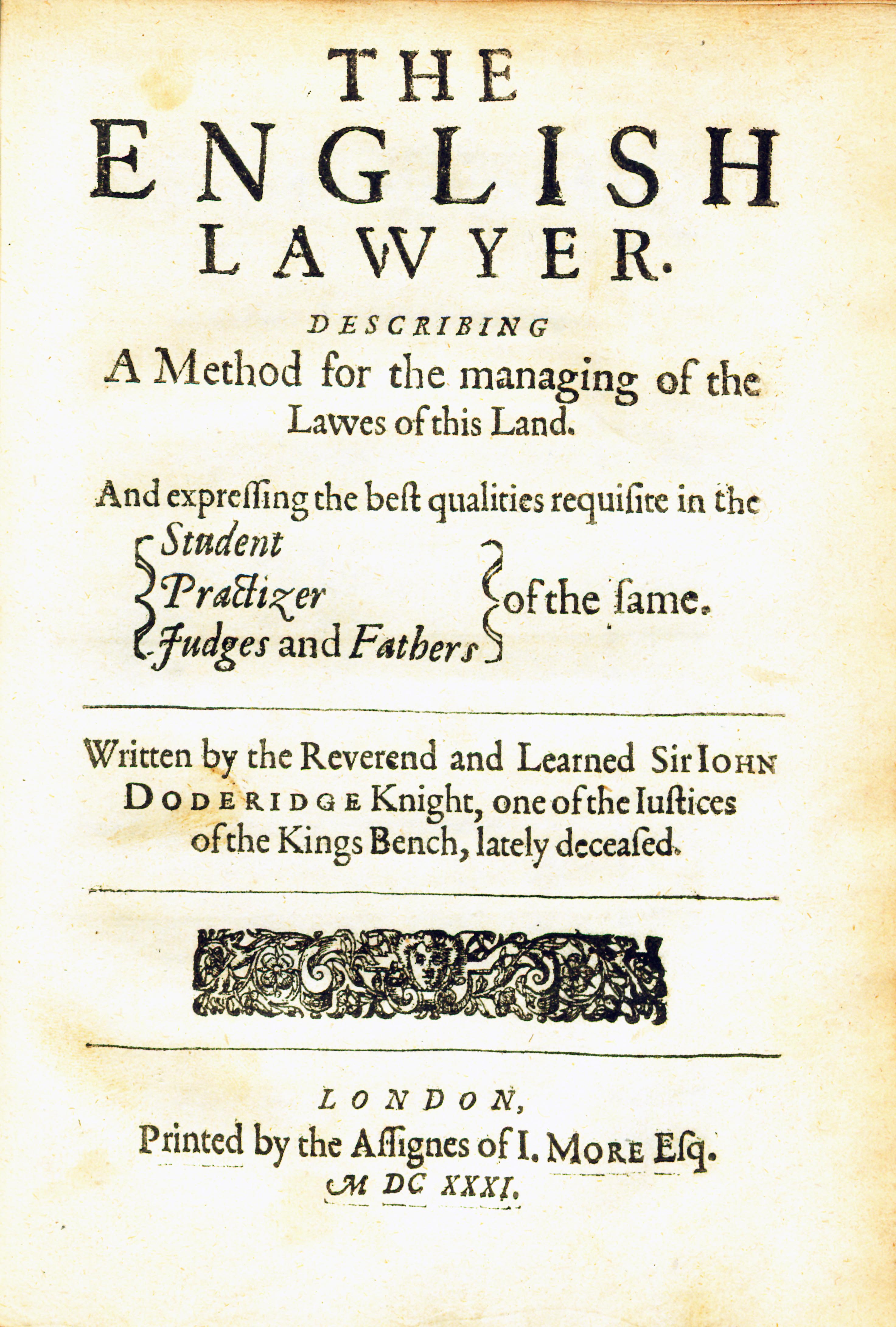
|
Doddridge, Sir John. The English Lawyer: Describing a Method for the Managing of the Lawes of this Land. London: Printed by the Assigns of I. More, 1631. |
|
An Experimental Essay Touching the Reformation of the Lawes of England (1648) In only six printed pages, this essay from the second part of the English Civil War proposes substantial reforms to the common law of the seventeenth century. The author argues for a survey of the laws of other nations in order to identify the best laws and the strongest foundation for a legal system. Once compared, English common law "might easily be mended" and "[t]he maine of these things may be settled in quarter of a yeare, without any great trouble to any Body." |
|
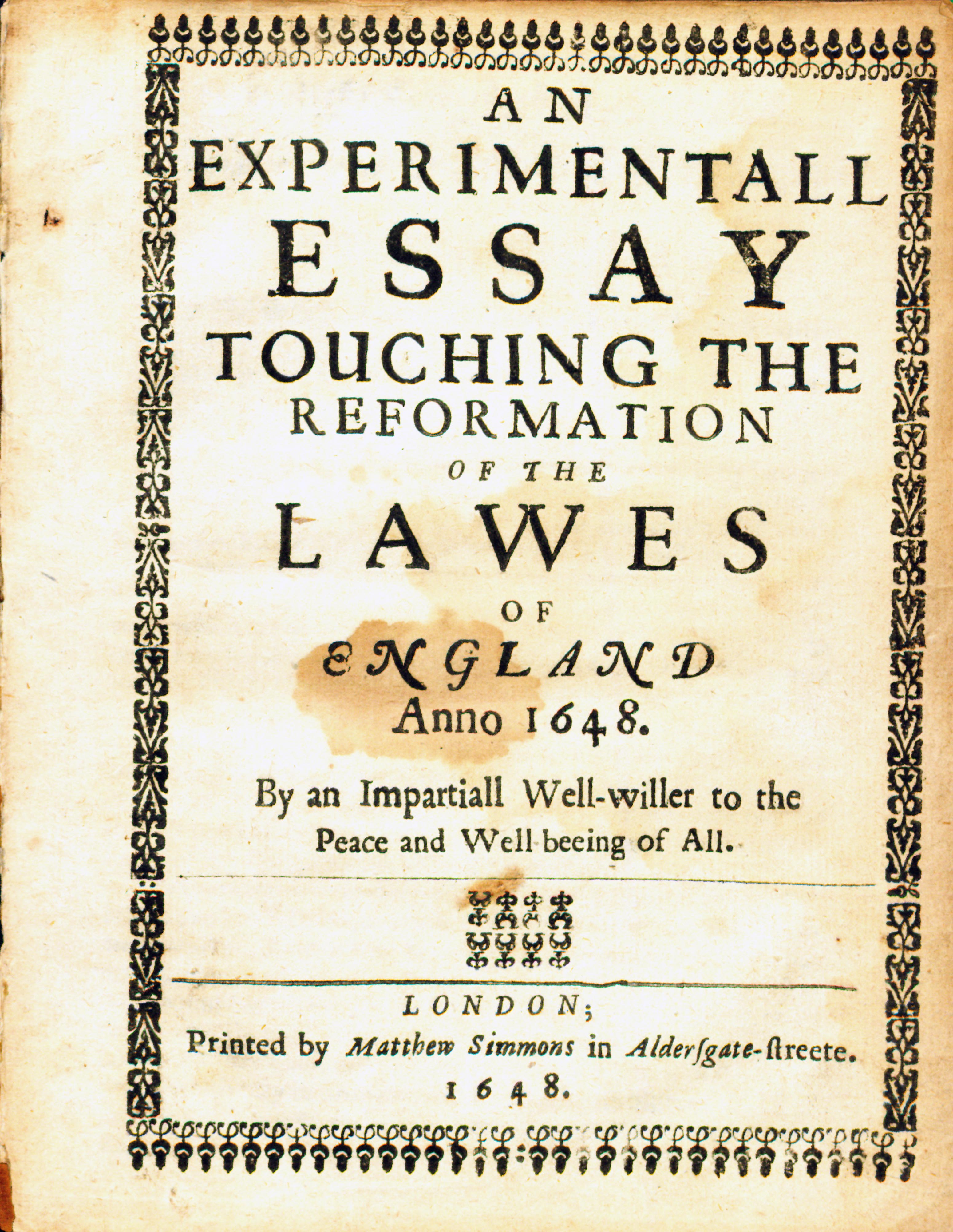
|
An Experimental Essay Touching the Reformation of the Lawes of England. London: Printed by Matthew Simmons, 1648. |
|
De Laudibus Legum Angliae (1616) and A Learned Commendation of the Politique Lawes of England (1567) Sir John Fortescue (c.1397–1479) composed this treatise around 1471 to instruct the Prince of Wales in the nature of common law vs. civil law from a decidedly pro-English point of view. He also touched upon the advantages of a constitutional monarchy over an absolute monarchy. De Laudibus Legum Angliae was written in the form of a dialogue between the author and the prince. As a work composed to instruct the layman, it contains a view of the law not seen in other treatises. While avoiding technical details, it provides the earliest commentary on the Inns of Court, the different elements of the legal profession and the nature of legal education at the time. The 1616 edition was the first edited by John Selden (1584–1654). The 1567 edition was the first English translation. |
|

|
Fortescue, Sir John. De Laudibus Legum Angliae. London: For the Companie of Stationers, 1616. |
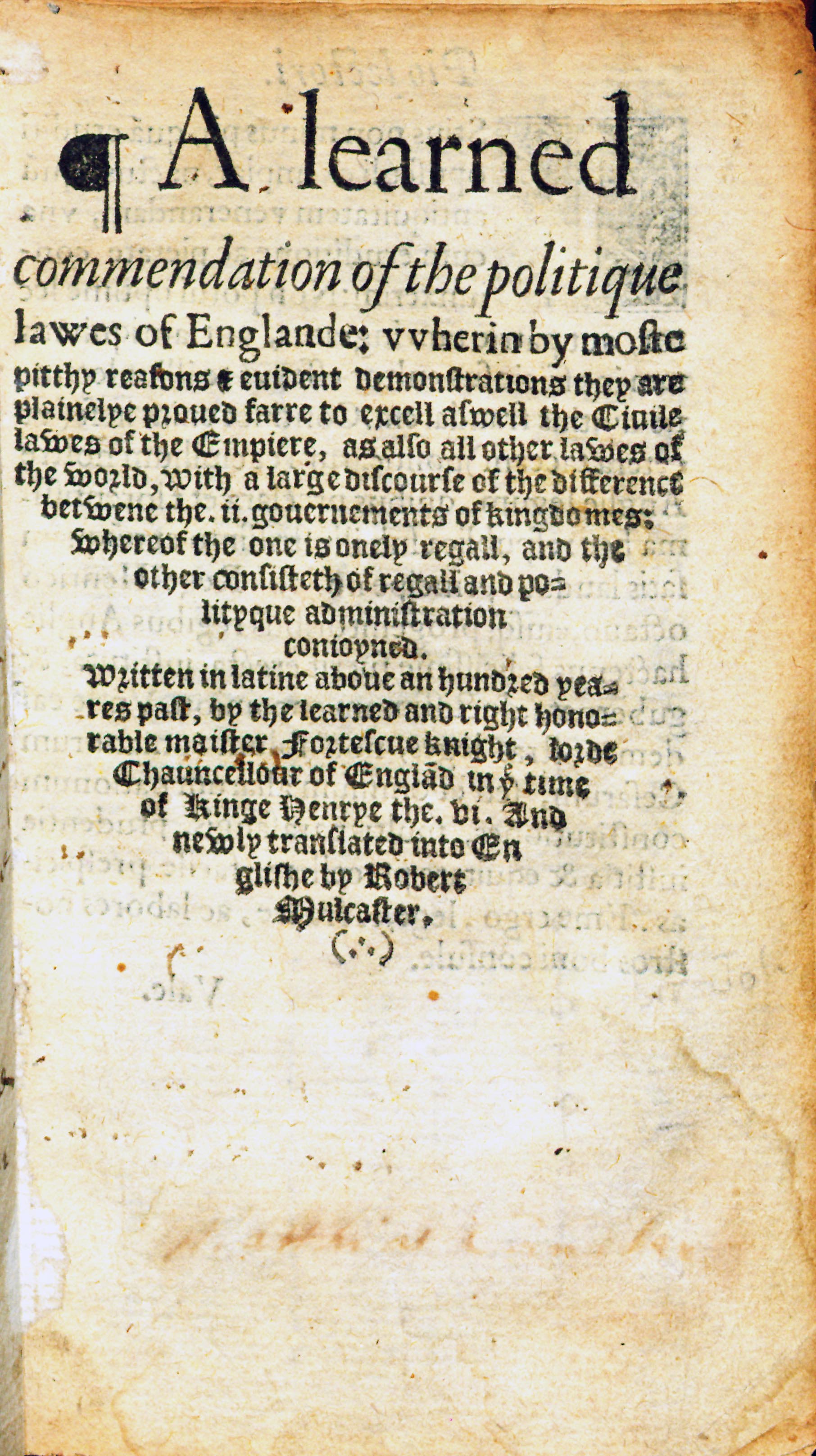
|
Fortescue, Sir John. A Learned Commendation of the Politique Lawes of England. 1st English ed. Translated by Robert Mulcaster. London: Rychard Tottill, 1567. |
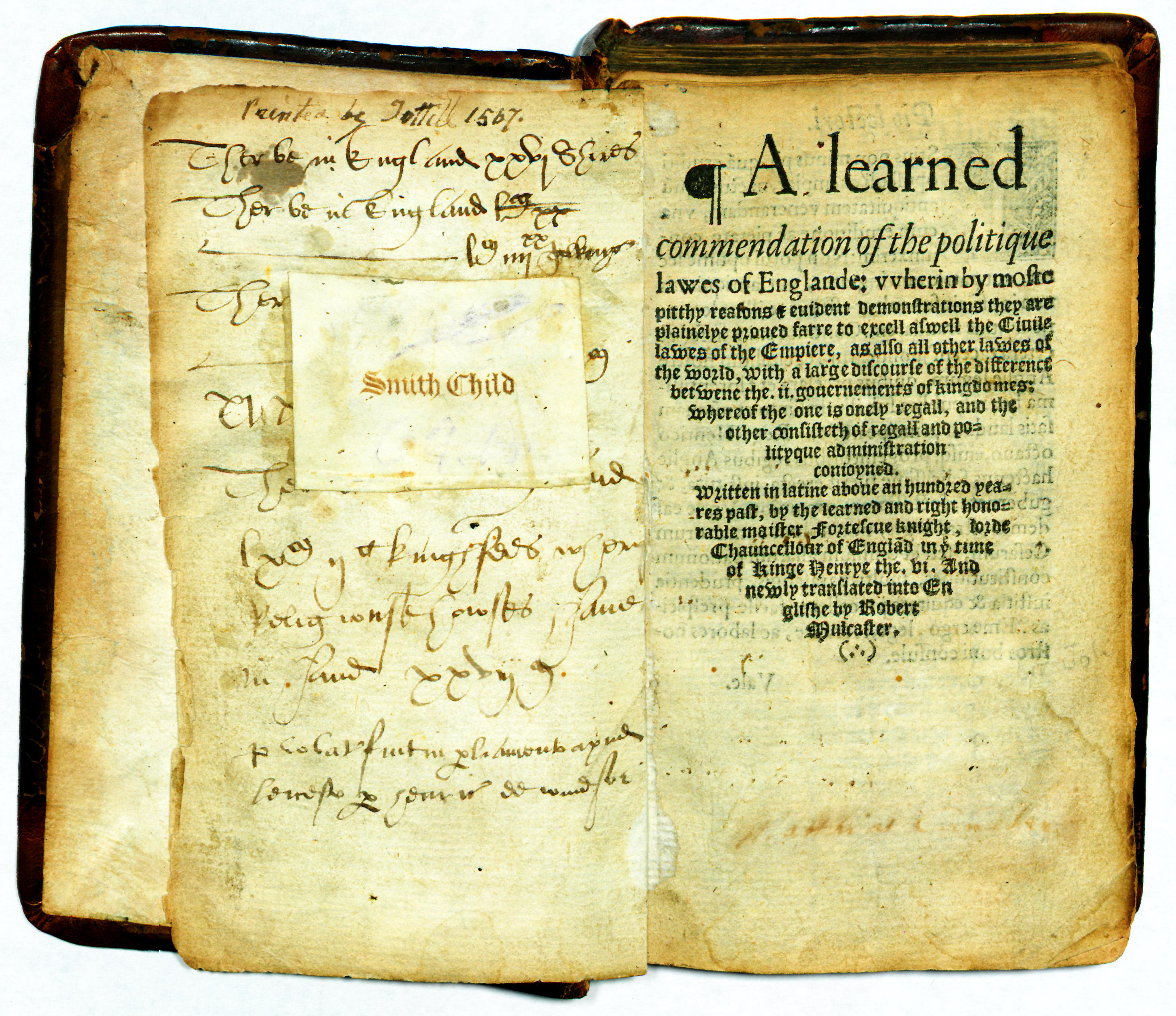
|
Verso, first free endpaper and title page of Sir John Fortesque's A Learned Commendation of the Politique Lawes of England, 1567. With bookplate of Smith Child, and contemporary manuscript notes. |
|
A Direction of Preparative to the Study of the Law (1620) Written as advice for the new student reading the law, William Fulbecke's (1559/60–1616) Direction provides readers with a range of information, both useful and speculative. Legal historian Sir William Holdsworth (1871–1944) describes the annotated list of civil and common law books as "perhaps the most useful part of the book." It also includes numerous suggestions regarding study methods such as the suggestion to create your own abridgment and an admonition against evening study. A ground-breaking work, it quickly inspired similar treatises. |
|

|
Fulbecke, William. A Direction of Preparative to the Study of the Law: Wherein is Shewed, What Things Ought to be Observed and Used of Them That are Addicted to the Study of Law, and What on the Contrary Part Ought to be Eschewed and Avoyded. 2nd ed. London: Printed for the Company of Stationers, 1620. |
|
Tracts (1683) Published posthumously, this collection of tracts includes three previously unpublished essays and the first English translation of "Jani Facies Altera." The latter, as well as "England's Epinomis," pertains to early British, Saxon and Norse influences on the common law and the English constitution. The other two tracts discuss the origins of the law on probate and intestate succession. John Selden (1584–1654), a prolific writer and "champion of political freedom," ranks among the most distinguished English legal historians. |
|
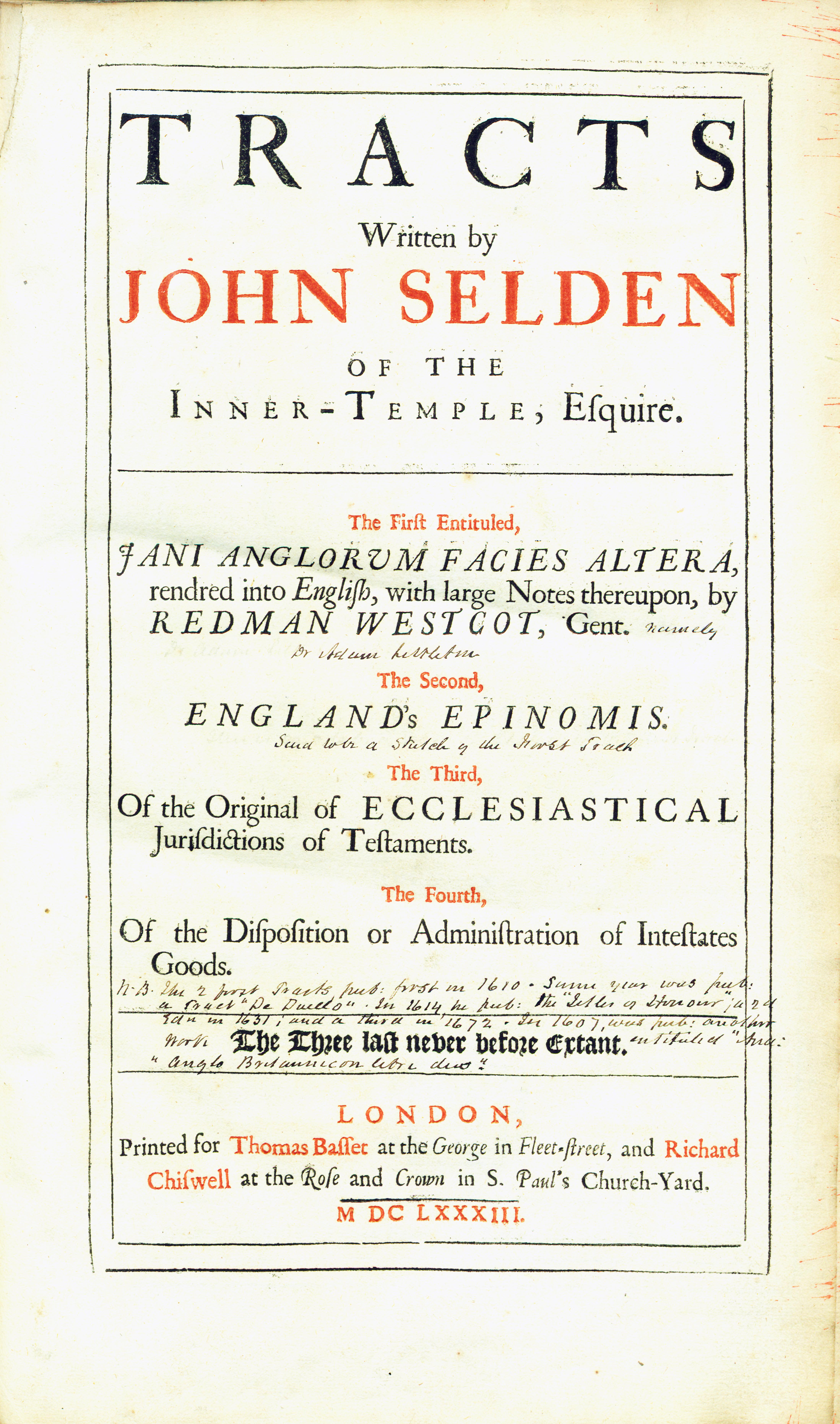
|
Selden, John. Tracts. 1st ed. London: Printed for Thomas Bassett and Richard Chiswell, 1683. |
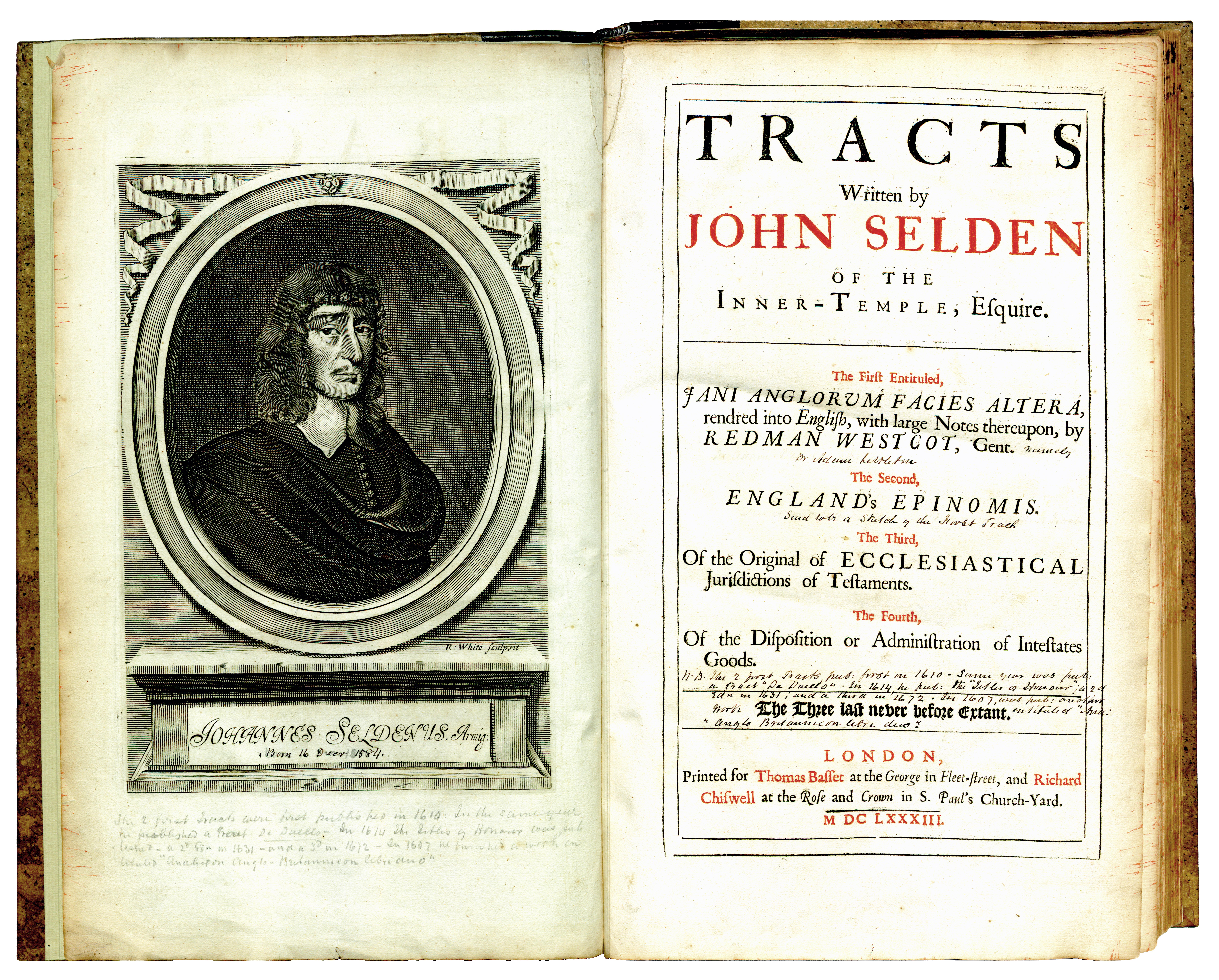
|
Frontispiece and title page, John Selden, Tracts, 1683. |

|
Frontispiece, John Selden, Tracts, 1683. |
|
The Faithful Councellor (1651) The author's first attempt at a legal encyclopedia, The Faithful Councellor divides the law into fifty-eight chapters which describe legal concepts in clear, concise English, illustrated by appropriate cases. In addition to typical common law themes, William Sheppard (bap. 1595, d.1674) made the innovative decision to include a chapter on the chancery court. While suffering from poor organization, The Faithful Councellor signaled a new genre of legal publication and became the basis for several subsequent, more fully–developed works. |
|
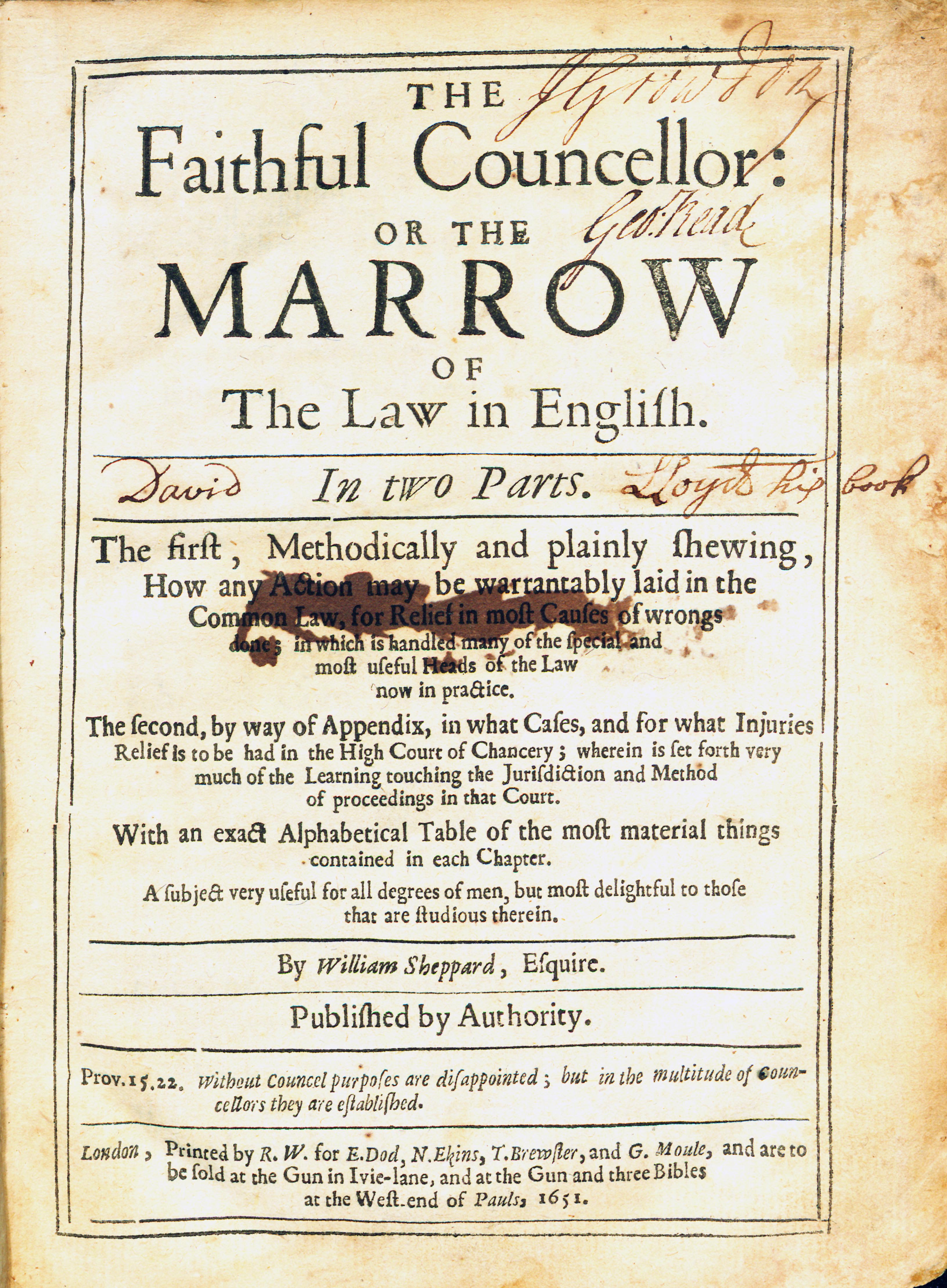
|
Sheppard, William. The Faithful Councellor: or the Marrow of the Law in English. 1st ed. London: Printed by R.W. for E. Dod, N. Ekins, T. Brewster, and G. Moule, 1651. |
|
The Dyaloges in Englishe (1616) and The Dialogue in English (1567) A truly important work in the history of common law, Christopher St. German (c.1460–1540/41) composed Doctor and Student as two discourses between individuals representing "conscience" and "English law." As they discuss the different elements of the law, the "Doctor" establishes the need for remedies to strict legal interpretation. For multiple reasons, the book's significance to the study and development of equity cannot be overstated. At least thirty editions of St. German's work were published. The first Dialogue initially appeared in 1528 in Latin; the second followed in 1530 in English. |
|
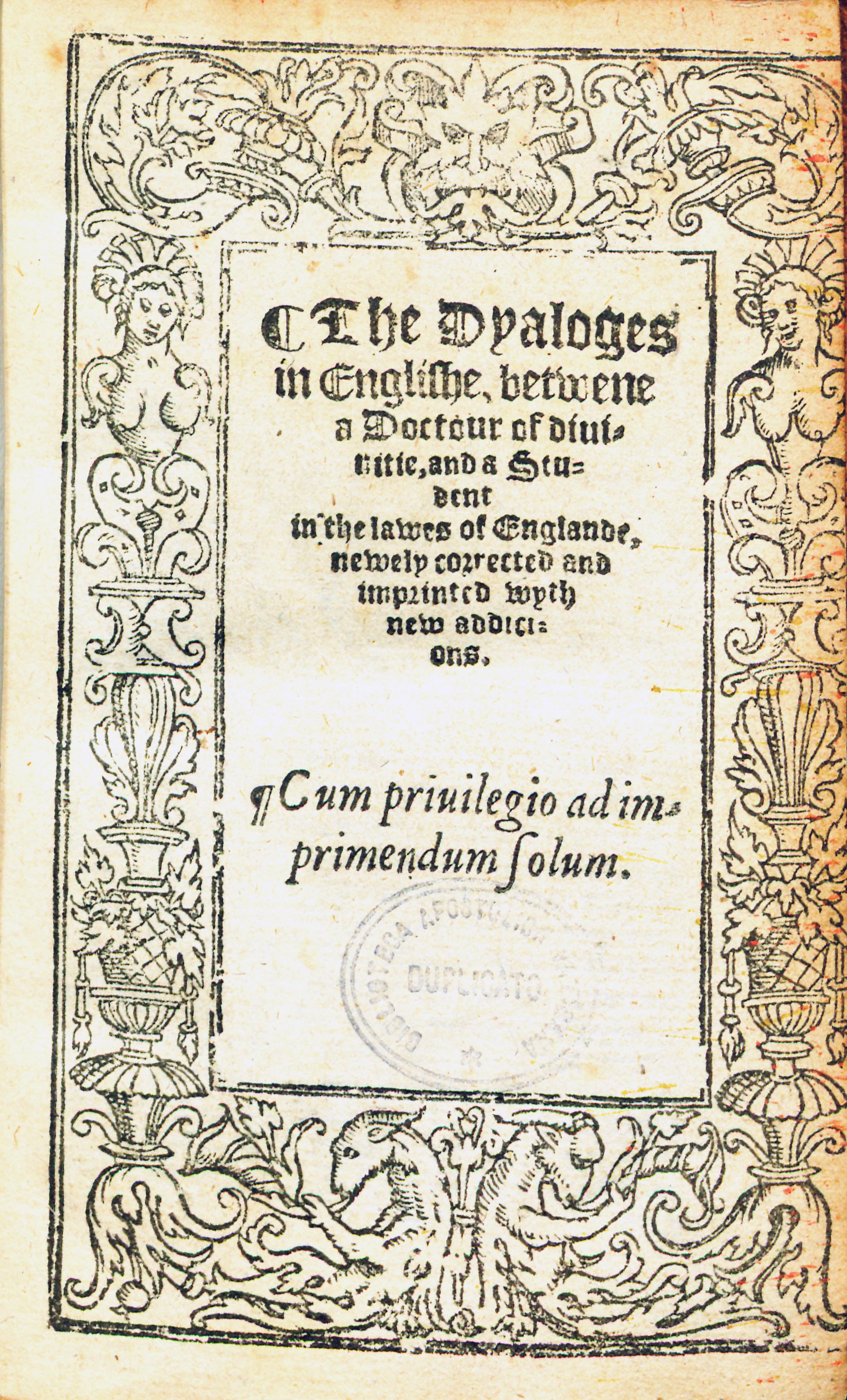
|
St. German, Christopher. The Dyaloges in Englishe, Betwene a Doctor of Divinitie and a Student in the Lawes of Englande. London: [Richard Totell] 1554 [i.e. 1565?]. |
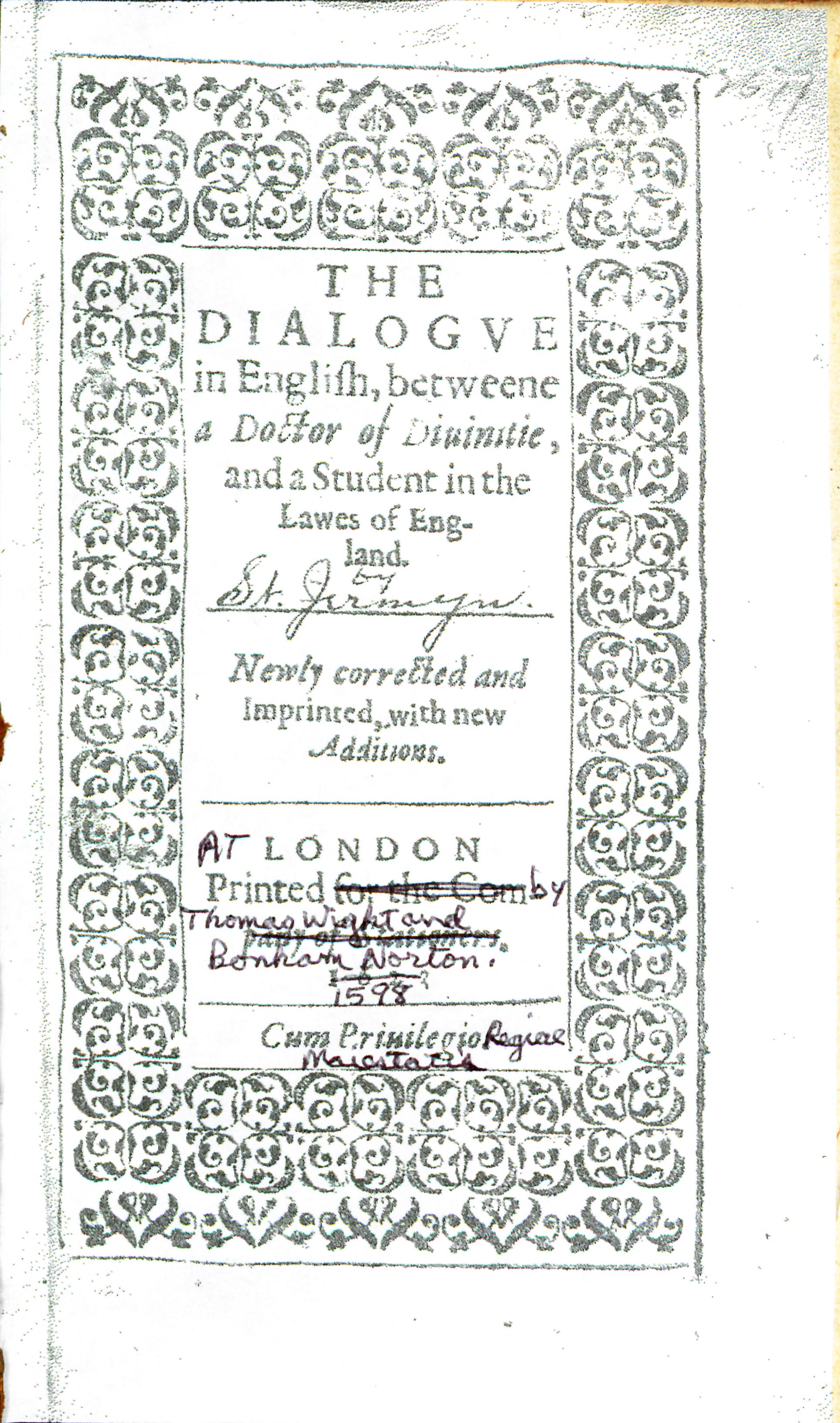
|
St. German, Christopher. The Dialogue in English, Betweene a Doctor of Divinitie, and a Student in the Lawes of England. London: Printed by Thomas Wright and Bonham Norton, 1598. |



